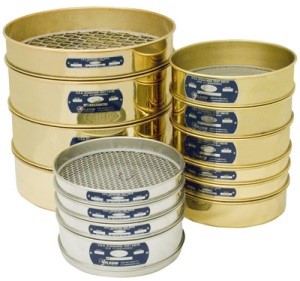Los Angeles Abrasion Value of Aggregate
1. objective
Abrasion test is carried out to test the hardness property of aggregates. The principle of Los Angeles abrasion test is to find the percentage wear due to relative rubbing action between the aggregate and steel balls used as abrasive charge.
2. apparatus required
3. reference
IS 2386(Part 4):1963 (Reaffirmed 2021) Methods of Test for Aggregates for Concrete- Mechanical Properties.
4. procedure
-
Gradation of the Aggregate should be carried out so as to assess the Grade of the Aggregate (A to G)
*Tolerance of +/- 2 percent permitted.Sieve Size Weight in gm. of Test Sample for Grade Passing (mm) Retained on (mm) A B C D E F G 80 63 2500* 63 50 2500* 50 40 5000* 5000* 40 25 1250 5000* 5000* 25 20 1250 5000 20 12.5 1250 2500 12.5 10 1250 2500 10 6.3 2500 6.3 4.75 2500 4.75 2.36 5000 - The test sample shall consist of clean aggregate which has been dried in an oven at 105 to 110°C to substantially constant weight and shall conform to one of the gradings shown in Table 1. The grading or gradings used shall be those most nearly representing the aggregate furnished for the work.
-
The test sample and the abrasive charge shall be placed in the Los Angeles abrasion testing machine
and the machine rotated at a speed of 30 to 33 rev/min. For gradings A, B, C and D, the machine shall
be rotated for 500 revolutions; for gradings E, F and G, it shall be rotated for 1000 revolutions as
mentioned in Table 2.
Grading Number of spheres Weight of charge (gm) A 12 5000 ± 25 B 11 4584 ± 25 C 8 3330 ± 20 D 6 2500 ± 15 E 12 5000 ± 25 F 12 5000 ± 25 G 12 5000 ± 25 Table 2: Number of Charges as per Grading of Aggregate
- The machine shall be so driven and so counter-balanced as to maintain a substantially uniform peripheral speed. If an angle is used as the shelf, the machine shall be rotated in such a direction that the charge is caught on outside surface of the angle.
- At the completion of the test, the material shall be discharged from the machine and a preliminary separation of the sample made on a sieve coarser than the 1.70 mm IS Sieve.
- The material coarser than the 1.70 mm IS Sieve shall be washed dried in an oven at 105 to 110°C to a substantially constant weight, and accurately weighed to the nearest gram (B).
A. Gradation of Aggregate
B. Procedure for Los Angeles Abrasion Test
5. calculation
-
The difference between the original weight and the final weight of the test sample is expressed as a percentage of the
original weight of the test sample. This value is reported as the percentage of wear.
Aggregate Abrassion Value = ((A-B)/A) X 100
where,
A = weight in gm of oven-dried sample.
B = weight in gm of fraction retained on 1.70 mm IS Sieves after washing and oven-dried upto constant weight.
6. Reporting of Results
- The difference between the original weight and the final weight of the test sample shall be expressed as a percentage of the original weight of the test Sample. The mean of two results shall be reported as the percentage of wear.



